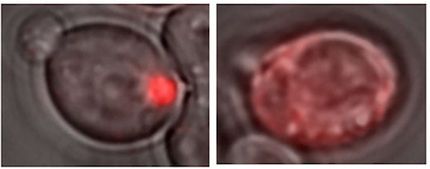Research into how prions act in the brain could hold the key to defeating diseases
Scientists at the University of Southampton are continuing their pioneering research into diseases such as Creutzfeld-Jakob Disease (CJD) and related conditions caused by tiny particles known as prions, thanks to a £300,000 grant from the Medical Research Council.
So far, there have been 148 deaths from confirmed or probably variant CJD (vCJD) in the UK. This is the human disease thought to be caused by eating food contaminated with prions that is also responsible for the epidemic of BSE or 'mad cow disease' in cattle.
Research has already found that the highly-infectious prions are misfolded proteins that spread rapidly in the brain and are very difficult to destroy. It is not known what causes the proteins to develop in this abnormal way and it is not known how they kill nerve cells in the brain. Professor Hugh Perry and colleagues of the University's School of Biological Sciences are examining exactly what makes particular nerve cells in the brain more susceptible to attack by prions.
'We are looking ultimately at ways of early detection and diagnosis so effective treatment can begin as soon as possible,' said Professor Perry. 'There is much we do not know about prions and prion diseases but our research teams are following several lines of investigation.'
Prion diseases are extremely complex and understanding their pathways and mechanisms remains a real challenge. The illnesses are fatal and once ill, patients deteriorate rapidly. There is currently no simple and accurate way to diagnose types of prion disease such as vCJD, no effective way of managing or treating patients and no cure is yet in sight.
Estimates of the numbers of people at risk from primary exposure to meat infected products and possible risk from secondary exposure, for example through blood transfusion, are still being debated and recalculated as new research adds new knowledge and information to the overall picture.
Most read news
Organizations
Other news from the department science

Get the life science industry in your inbox
By submitting this form you agree that LUMITOS AG will send you the newsletter(s) selected above by email. Your data will not be passed on to third parties. Your data will be stored and processed in accordance with our data protection regulations. LUMITOS may contact you by email for the purpose of advertising or market and opinion surveys. You can revoke your consent at any time without giving reasons to LUMITOS AG, Ernst-Augustin-Str. 2, 12489 Berlin, Germany or by e-mail at revoke@lumitos.com with effect for the future. In addition, each email contains a link to unsubscribe from the corresponding newsletter.
Most read news
More news from our other portals
Last viewed contents
Infantile_cortical_hyperostosis
Lili_Elbe
Category:Thoracic_limb_anatomy
Charcot-Marie-Tooth_disease
Small RNA fragments defend the genome when it's 'naked'
Generex Biotechnology Engages Jaime Davidson as Medical Director



















































